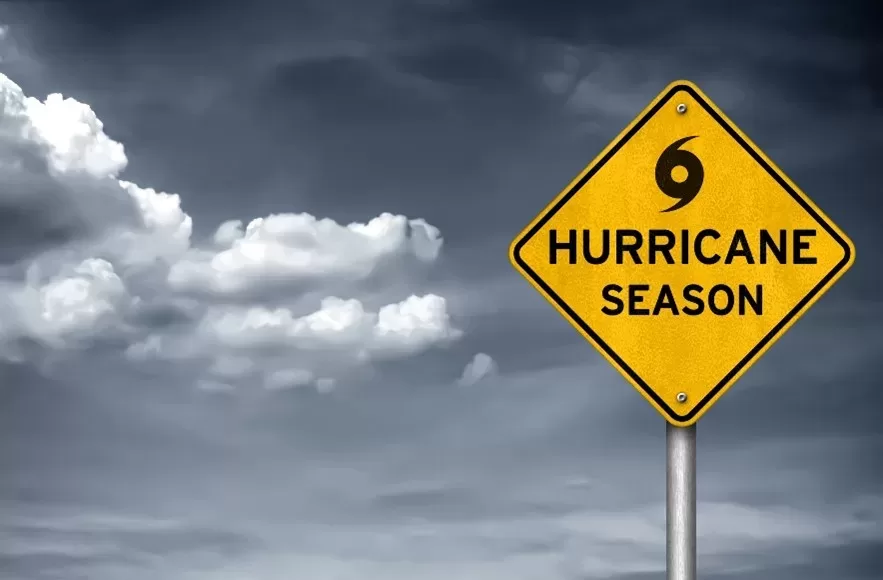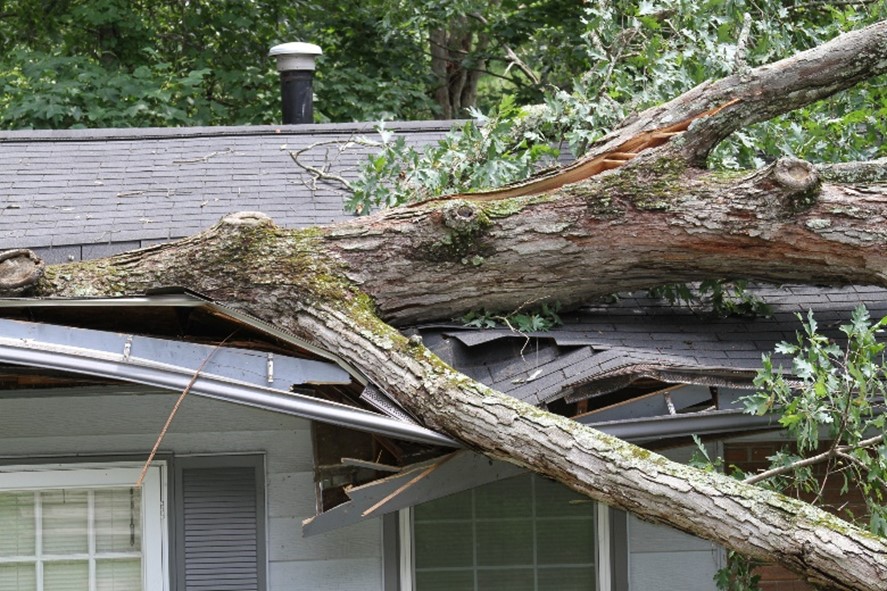
Are You Ready Contractors?

By Beth Hinton
The Atlantic storm season has again arrived, and we must remain vigilant in our preparations for a major storm event. With hurricane season lasting from June 1, 2022, to November 30, 2022, the National Oceanic and Atmospheric Administration (NOAA) is predicting an above-average period for storms.
Many State and Municipal requirements, rules, and laws direct us in how we handle a job site. That would include fencing, debris, and safety.
Specific language in the Building Codes often dictates how we conduct ourselves and our work at a disaster job site.
After a storm, the demand or rush for labor and materials, coupled with unfamiliar locations and the unique job-site hazards associated with post-event situations, can create significant risks and challenges for contractors. Before you move to a new location and a new storm, you should always ensure you have a skilled workforce large enough to handle new jobs.
Contractors can expect to face weather-related delays, increased storm repair workload, and a significant tools and materials shortage – brought on by the supply chain issues in the US.
Be sure to review your business insurance coverage and state/local laws that apply to restoration contractors.
Here are our top four tips on ways to prepare now.
1. HAVE THE RIGHT EQUIPMENT FOR THE JOB
Sure, you can load up a truck or trailer with some air movers and a few dehus but will that be enough for the opportunities that you will come across? You may likely need a trailer-mounted desiccant or two or three so you can make some real money and pay for the expensive travel. First Choice Equipment (your author) can often help you get equipment and has many sources to make that happen. With the supply chain issues we face, it will be important to contact us immediately when you know what you’ll need. Many clients will call and not everyone will get equipment.
2. FULL-SERVICE CONTRACTORS GET MORE OPPORTUNITIES
 The roof of a home or business can be damaged by a hurricane – from the high winds and flying or fallings trees or debris. Contractors who don’t offer full-service restoration should start hiring and training staff now. If you aren’t comfortable with, or not ready to embrace the cost of offering in-house full-service, then reach out to trusted construction contractors that will support you and assist you when the time comes. It’s no secret that many insurance companies want to engage with a full-service restoration firm.
The roof of a home or business can be damaged by a hurricane – from the high winds and flying or fallings trees or debris. Contractors who don’t offer full-service restoration should start hiring and training staff now. If you aren’t comfortable with, or not ready to embrace the cost of offering in-house full-service, then reach out to trusted construction contractors that will support you and assist you when the time comes. It’s no secret that many insurance companies want to engage with a full-service restoration firm.
3. KNOW THE LAWS AND RULES IN THE AREA YOU PLAN TO WORK
If you plan to travel out of your regular area, know that other cities or states will have different laws and rules. Don’t be guilty of Public Adjusting. As a contractor, it’s illegal and can get you fined or worse – quickly! Consider partnering or working with a legitimate Public Adjuster that will keep you legal and send you to work. Outsourcing your estimates and supplements is one way to stay compliant in any state.
4. PREPARED AND EFFICIENT YOU WILL BE MORE PROFITABLE
Every minute of every day, seven days a week becomes critical to your success during hurricanes. Be sure you deploy qualified sales staff to the right areas to secure the work you want. As roofing or restoration contractors, you will need to teach and educate that staff on what to target and who is your ideal client. Do this training BEFORE the storm so they are not scrambling and trying to figure it out by trial and error.
A terrific way to stay ahead of your competition is to ensure your company is running as efficiently as possible and that often means outsourcing your claims department.
Since some regions may require permits to conduct your work, and often those rules include ordinances or rules such as:
- Upon issuance of a tropical storm or hurricane watch for our area by the National Weather Service, immediate actions should be undertaken to secure/prepare a project/site for the potential effects of a storm event. Ordinary activity may continue if these actions are being taken.
- Upon the issuance of a tropical storm or hurricane warning for our area by the National Weather Service, all normal construction activities are ordered to cease except for those activities directly necessary to secure a project or site in preparation for a storm event.
- All regulated work may resume once the storm has passed and the prevailing winds drop below tropical storm force (40 mph) at the site.
And always, designate a Hurricane Emergency Response Team, and select a key member to monitor weather conditions and communicate required actions as regularly as possible.
The listed actions and your written plans will help to both prevent and mitigate potential loss or calamities in your contracting business when working in a hurricane or major storm zone. They’ll create an improved likelihood of delivering construction projects on time, keeping costs contained and lowering the overall cost of risk.
Beth from First Choice Drying Equipment is ready to take your call in person! You can schedule a call by filling out the form on the contact page, or you can call us anytime at the number listed below.
Follow First Choice Drying Equipment on LinkedIn to learn more
about the equipment repairs and equipment we offer.
Email Beth at beth.firstchoice@gmail.com or call her at (719) 240-4930.


 Finally, do your crews approach the project with a “spike the job” mentality, bringing equipment in their arms off the truck at the start, or do you take time to assess, measure, and plan your work? Answer those questions first and you will quickly see just how your company is set up to succeed – or fail. Spiking the job often conveys that you are desperate to get the job – and that alone comes across loud and clear. It usually scares the client, and they look elsewhere for a more competent company.
Finally, do your crews approach the project with a “spike the job” mentality, bringing equipment in their arms off the truck at the start, or do you take time to assess, measure, and plan your work? Answer those questions first and you will quickly see just how your company is set up to succeed – or fail. Spiking the job often conveys that you are desperate to get the job – and that alone comes across loud and clear. It usually scares the client, and they look elsewhere for a more competent company.

 You are putting all your trust in a machine and it’s highly likely that your “best first impression” fails miserably, so, when things go wrong on the initial answer, (machine pick-up) there is not usually a chance to fix the issue.
You are putting all your trust in a machine and it’s highly likely that your “best first impression” fails miserably, so, when things go wrong on the initial answer, (machine pick-up) there is not usually a chance to fix the issue.



